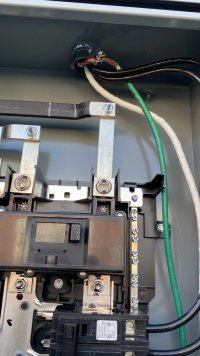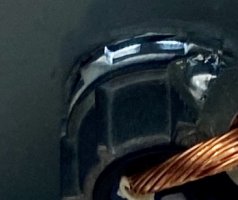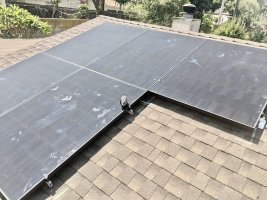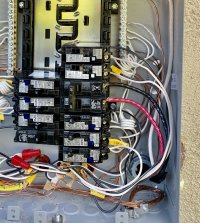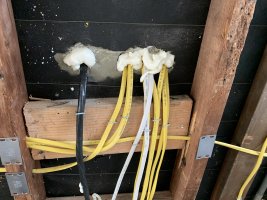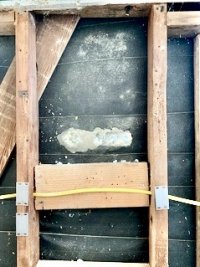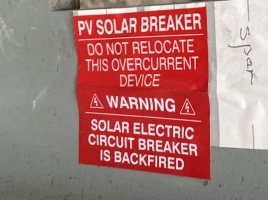-
Welcome to The Building Code Forum
Your premier resource for building code knowledge.
This forum remains free to the public thanks to the generous support of our Sawhorse Members and Corporate Sponsors. Their contributions help keep this community thriving and accessible.
Want enhanced access to expert discussions and exclusive features? Learn more about the benefits here.
Ready to upgrade? Log in and upgrade now.
You are using an out of date browser. It may not display this or other websites correctly.
You should upgrade or use an alternative browser.
You should upgrade or use an alternative browser.
An average day
- Thread starter ICE
- Start date
Some are good, some are great, most are middling and then there’s the worthless.Very nice clear picture. Is that what you are seeing on your video inspections?
If daylight can get through, so can water.Whats the deal about daylight?
steveray
SAWHORSE
It doesn't rain in SoCal....
linnrg
Sawhorse
Darn if you ever see size 11.5 you will have answered my question!
I was told you can walk on them when they submitted plans without access to some roof skylights? hummm
ICE, you'll have to advise us, should we let the solar installers do visual inspections, just got a sheet telling me how to set that up!
Not gonna do it...not gonna do it!
ICE, you'll have to advise us, should we let the solar installers do visual inspections, just got a sheet telling me how to set that up!
Not gonna do it...not gonna do it!
No panel manufacturer allows walking on the panels. I have witnessed it hundreds of times. When solar was in it's infancy a shaded or damaged panel would kill the entire array. Now there is technology that would isolate a shaded or damaged panel. The array will still generate power but at a lessor amount. So if walking on the panels causes damage, it is less likely to be found out.
I have been performing virtual solar inspections for six months.
I have been performing virtual solar inspections for six months.
Kearney.200
REGISTERED
Is'n there a song about that ?It doesn't rain in SoCal....
TheCommish
SAWHORSE
can you hum a few bars to see if remember the tune?
The setup prior to the solar contractor messing with it had two circuit breakers that powered a swimming pool. Being at the end of the busbar, they had to be relocated. 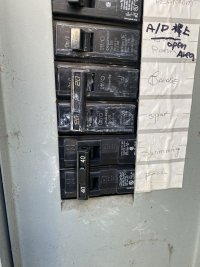
The problem that I have with it is there is no pair of breakers labeled swimming pool. The solar breaker took the place of the swimming pool breakers and the guy that handled the virtual inspection is clueless. The correction states that GFCI protection is required.
This how I wrote that correction:
The previous circuit labeling had two breaker slots identified as "Swimming" "Pool". Those slots are at the bottom of the busbar. The solar breakers have been placed at the bottom and there is no pair of breakers labeled swimming pool. Please explain this and label the circuits correctly.
Furthermore, I must assume that the missing swimming pool breakers were GFCI. And therefore will be replaced with GFCI. I could also assume that the previous breakers were not GFCI. In that case, because they were removed from the busbar they shall not be reused and GFCI protection is required.
I bet that I hear about this one.


The problem that I have with it is there is no pair of breakers labeled swimming pool. The solar breaker took the place of the swimming pool breakers and the guy that handled the virtual inspection is clueless. The correction states that GFCI protection is required.
This how I wrote that correction:
The previous circuit labeling had two breaker slots identified as "Swimming" "Pool". Those slots are at the bottom of the busbar. The solar breakers have been placed at the bottom and there is no pair of breakers labeled swimming pool. Please explain this and label the circuits correctly.
Furthermore, I must assume that the missing swimming pool breakers were GFCI. And therefore will be replaced with GFCI. I could also assume that the previous breakers were not GFCI. In that case, because they were removed from the busbar they shall not be reused and GFCI protection is required.
I bet that I hear about this one.

Mech
REGISTERED
What does it mean when the red warning sticker in the above photo states the solar electric circuit breaker is backfired? Is that the same as back fed? Or does that mean the installation was not done properly?
fatboy
Administrator
I wrote a correction stating that a sleeve crimp is not allowed. The contractor stated that he used a c-tap. I said that this absolutely looks like a crimp sleeve. He explained that it is one half of a c-tap. When asked why he did that he said that it's just the way he has always done it.
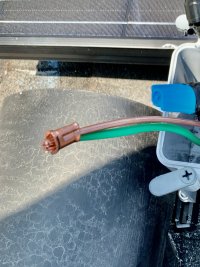
This is another thing that I've never seen done before. That solid copper wire is a GEC to an auxiliary grounding electrode. Rather than run it across the roof and down the side of the house he took it into the attic and out to the rod.


This is another thing that I've never seen done before. That solid copper wire is a GEC to an auxiliary grounding electrode. Rather than run it across the roof and down the side of the house he took it into the attic and out to the rod.

TheCommish
SAWHORSE
That is a leak ready to happen.
Second is that roof attachment listed/designed to be used that way?
Second is that roof attachment listed/designed to be used that way?
The penetration is slathered with mastic.That is a leak ready to happen.
Second is that roof attachment listed/designed to be used that way?
The roof attachment is a Pegasus L-foot with a Pegasus comp roof flashing.
Mr. ICE,
I have a solar project that's using that same Pegasus comp roof flashing and the documents the solar company provided me does not show the flashing under a shingle like plumbing pipe flashing's. No word of mastic being used. Didn't see a manufactures installation recommendation either way.
Are you seeing the flashing both ways and okay with it?
I have a solar project that's using that same Pegasus comp roof flashing and the documents the solar company provided me does not show the flashing under a shingle like plumbing pipe flashing's. No word of mastic being used. Didn't see a manufactures installation recommendation either way.
Are you seeing the flashing both ways and okay with it?
Pegasus Solar - A Better Day on the Job
There is only one way.

